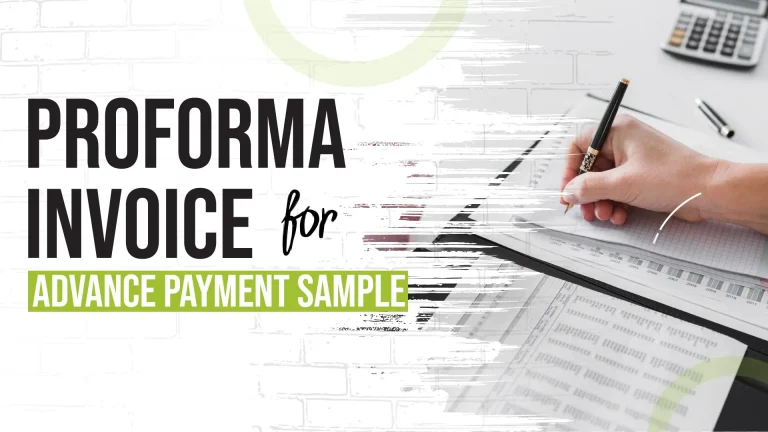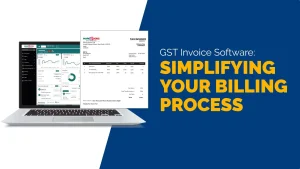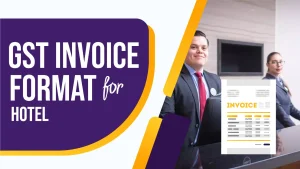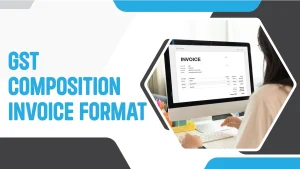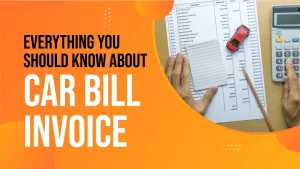A proforma invoice is a very important document in business, especially when asking for advance payments. It acts as a preliminary bill of sale that is sent to buyers before the actual delivery of goods or services. This invoice outlines the products, quantities, and agreed-upon prices, helping both parties understand the details of the transaction before it is finalized. Providing a clear and detailed proforma invoice when requesting an advance payment builds trust and ensures a smooth transaction process. In this blog, we will discuss Proforma Invoice For Advance Payment Sample, the key elements it should include, and provide a sample to illustrate its structure.
What is a Proforma Invoice?
A proforma invoice is a document that acts as a pre-invoice or a preliminary bill of sale. It is sent to the buyer before the actual goods or services are delivered. This document is not a demand for payment but rather a detailed outline of the impending transaction. It provides the buyer with an accurate picture of what they will receive and the costs involved. Proforma invoices are commonly used in international trade to declare the value of goods for customs purposes and in transactions requiring advance payment.
Importance of a Proforma Invoice for Advance Payments
When dealing with advance payments, a proforma invoice is essential for several reasons:
- Clarity and Transparency: It provides a clear breakdown of the goods or services, prices, and terms, ensuring both parties are on the same page.
- Legal Documentation: It can serve as a binding agreement between the buyer and seller, detailing the terms of the transaction.
- Customs and Shipping: In international trade, proforma invoices are used to declare the value of goods for customs purposes.
- Payment Processing: It helps in processing advance payments by giving the buyer a formal document to reference when making payment.
Key Elements of a Proforma Invoice for Advance Payments
To ensure that your proforma invoice is effective and professional, it should include the following elements:
- Header: The word “Proforma Invoice” should be prominently displayed at the top of the document.
- Seller’s Information: Include the seller’s name, address, contact details, and any relevant business registration numbers.
- Buyer’s Information: Include the buyer’s name, address, and contact details.
- Invoice Number: Assign a unique invoice number for tracking purposes.
- Invoice Date: The date when the proforma invoice is issued.
- Description of Goods/Services: Detailed description of the goods or services being sold, including quantities and unit prices.
- Total Amount: The total amount payable, including any applicable taxes, shipping costs, and other fees.
- Payment Terms: Clearly state the terms of payment, including due date and method of payment.
- Validity Period: Specify how long the proforma invoice is valid, indicating the time frame within which the advance payment should be made.
- Seller’s Signature: An authorized signature from the seller to validate the document.
Proforma Invoice For Advance Payment Sample
Below is a sample proforma invoice for advance payment to give you an idea of how to structure your document:
Proforma Invoice
Seller’s Information: XYZ Company
123 Business Street
City, State, ZIP Code
Phone: (123) 456-7890
Email: info@xyzcompany.com
Buyer’s Information: ABC Corporation
456 Commerce Avenue
City, State, ZIP Code
Phone: (987) 654-3210
Email: procurement@abccorp.com
Invoice Number: PI-2024-001
Invoice Date: July 15, 2024
Description of Goods/Services:
| Item Description | Quantity | Unit Price | Total Price |
|---|---|---|---|
| Product A | 100 | $10.00 | $1,000.00 |
| Product B | 50 | $20.00 | $1,000.00 |
| Service C | 10 hours | $50.00/hr | $500.00 |
Subtotal: $2,500.00
Shipping: $100.00
Tax (5%): $130.00
Total Amount: $2,730.00
Payment Terms: 50% advance payment due by July 25, 2024. Remaining balance due upon delivery.
Validity Period: This proforma invoice is valid until August 15, 2024.
Seller’s Signature: ____________________
Benefits of Using a Proforma Invoice for Advance Payments
Using a proforma invoice for advance payments offers several benefits:
- Reduces Risk: By providing a detailed outline of the transaction, it reduces the risk of misunderstandings and disputes.
- Enhances Trust: It shows professionalism and transparency, which can enhance trust between the buyer and seller.
- Streamlines Processes: It simplifies the payment process by providing clear instructions and necessary details for the buyer.
- Facilitates Financing: Buyers can use the proforma invoice to arrange for financing or funds needed for the advance payment.
How to Create a Proforma Invoice
Creating a proforma invoice is straightforward if you follow these steps:
- Use a Template: Start with a proforma invoice template to ensure all necessary elements are included.
- Customize the Details: Fill in the specific details for your transaction, including seller and buyer information, description of goods/services, and payment terms.
- Review for Accuracy: Double-check all information for accuracy to avoid any errors or misunderstandings.
- Include Payment Instructions: Clearly state how the buyer should make the advance payment, including accepted payment methods and any relevant account details.
- Send to Buyer: Once completed, send the proforma invoice to the buyer and keep a copy for your records.
Common Mistakes to Avoid
When preparing a proforma invoice for advance payments, avoid these common mistakes:
- Incomplete Information: Ensure all required details are included and accurately presented.
- Ambiguous Terms: Be clear and specific in your terms to prevent any confusion.
- Incorrect Calculations: Double-check all calculations to ensure accuracy in pricing, taxes, and total amounts.
- Lack of Validity Period: Always specify a validity period to avoid open-ended commitments.
Tips for Effective Proforma Invoices
To make your proforma invoices more effective, consider these tips:
- Be Detailed: Provide thorough descriptions and avoid vague terms.
- Use Professional Language: Maintain a professional tone and clear language.
- Include Contact Information: Ensure your contact details are easily accessible in case the buyer has questions.
- Follow Up: After sending the proforma invoice, follow up with the buyer to confirm receipt and address any queries.
Conclusion
A proforma invoice for advance payment is a vital tool in business transactions, ensuring clarity, transparency, and professionalism. By including all necessary elements and avoiding common mistakes, you can create effective proforma invoices that facilitate smooth and trustworthy transactions. Whether you’re a seasoned business owner or new to the trade, understanding and utilizing proforma invoices can significantly enhance your business operations.
Also Read
- How to Ensure Data Security in Your Invoice Management SystemIn today’s digital age, businesses rely heavily on technology to streamline operations and improve efficiency. An invoice management system plays a crucial role in managing financial transactions and maintaining accurate records. However, with the increasing reliance on technology comes the… Read more: How to Ensure Data Security in Your Invoice Management System
- GST Invoice Software: Making Billing EasyIn today’s busy world of business, being efficient is super important. One big thing that needs to be super efficient is billing. With new technology, old-fashioned manual billing is out of date and can make a lot of mistakes. That’s… Read more: GST Invoice Software: Making Billing Easy
- GST Invoice Format for HotelIn the hospitality industry, especially for hotels, managing financial transactions is a very important task. One key part of this financial management is creating invoices that follow the rules of the Goods and Services Tax (GST) in India. Having a… Read more: GST Invoice Format for Hotel
- GST Composition Invoice FormatThe GST (Goods and Services Tax) Composition Scheme is a straightforward and user-friendly taxation scheme designed for small businesses in India. This scheme reduces the compliance burden for small taxpayers by allowing them to pay GST at a fixed rate… Read more: GST Composition Invoice Format
- Everything You Should Know About Car Bill InvoiceWhen it comes to car purchases, sales, repairs, or rentals, a car bill invoice is an essential document. This invoice serves as a record of the transaction and provides a detailed account of the services rendered or goods sold. Understanding… Read more: Everything You Should Know About Car Bill Invoice
Frequently Asked Questions
What is a proforma invoice for advance payment?
A proforma invoice for advance payment is a preliminary bill of sale sent to a buyer before the goods or services are delivered. It outlines the details of the transaction, including the products, quantities, and agreed-upon prices. This invoice is not a demand for payment but provides the buyer with a clear picture of what they will receive and the costs involved. It helps in processing advance payments and ensures that both parties are on the same page regarding the transaction terms.
Why is a proforma invoice important for advance payments?
A proforma invoice is important for advance payments because it provides clarity and transparency. It ensures that both the buyer and seller agree on the details of the transaction before proceeding. This reduces the risk of misunderstandings and disputes. Additionally, it serves as a legal document that can be used to process advance payments and declare the value of goods for customs purposes. It also enhances trust between the buyer and seller by showing professionalism and transparency.
What information should be included in a proforma invoice?
A proforma invoice should include several key pieces of information: the word “Proforma Invoice” at the top, seller’s name and contact details, buyer’s name and contact details, a unique invoice number, the invoice date, a detailed description of the goods or services, quantities, unit prices, the total amount payable, payment terms, validity period, and the seller’s signature. Including all these elements ensures that the proforma invoice is comprehensive and clear, reducing the risk of misunderstandings.
How do you create a proforma invoice for advance payment?
To create a proforma invoice for advance payment, start with a template to ensure all necessary elements are included. Fill in the specific details of the transaction, such as the seller and buyer information, a description of goods or services, quantities, unit prices, total amount, payment terms, and validity period. Double-check all the information for accuracy. Clearly state how the buyer should make the advance payment and any accepted payment methods. Finally, send the proforma invoice to the buyer and keep a copy for your records.
Can a proforma invoice be used as a final invoice?
No, a proforma invoice cannot be used as a final invoice. A proforma invoice is a preliminary document that outlines the details of a transaction before the goods or services are delivered. It is not a demand for payment but rather an estimate of the costs involved. Once the goods or services have been delivered, a final invoice should be issued to request payment. The final invoice will include any adjustments or additional charges that may have occurred during the transaction.
How does a proforma invoice help with customs clearance?
A proforma invoice helps with customs clearance by declaring the value of goods being shipped. In international trade, customs authorities require a detailed invoice to assess duties and taxes. The proforma invoice provides this information, including the description of goods, quantities, unit prices, and total value. This helps ensure that the goods pass through customs smoothly and that the correct duties and taxes are applied. It is important to provide accurate and detailed information on the proforma invoice to avoid any delays or issues with customs clearance.
What are the common mistakes to avoid in a proforma invoice?
Common mistakes to avoid in a proforma invoice include incomplete information, ambiguous terms, incorrect calculations, and lack of a validity period. Ensure that all required details are included and accurately presented. Be clear and specific in your terms to prevent any confusion. Double-check all calculations to ensure accuracy in pricing, taxes, and total amounts. Always specify a validity period to avoid open-ended commitments. By avoiding these mistakes, you can create an effective and professional proforma invoice that facilitates smooth transactions.
How does a proforma invoice enhance trust in business transactions?
A proforma invoice enhances trust in business transactions by providing clarity and transparency. It shows professionalism and attention to detail, which helps build confidence between the buyer and seller. By clearly outlining the terms of the transaction, including the description of goods or services, quantities, prices, and payment terms, a proforma invoice ensures that both parties are on the same page. This reduces the risk of misunderstandings and disputes, fostering a positive business relationship based on trust and reliability.
What are the benefits of using a proforma invoice for advance payments?
Using a proforma invoice for advance payments offers several benefits. It reduces the risk of misunderstandings by providing a detailed outline of the transaction. It enhances trust between the buyer and seller by showing professionalism and transparency. It simplifies the payment process by providing clear instructions and necessary details for the buyer. Additionally, buyers can use the proforma invoice to arrange for financing or funds needed for the advance payment. Overall, it ensures a smooth and trustworthy transaction process.
How should a seller follow up after sending a proforma invoice?
After sending a proforma invoice, a seller should follow up with the buyer to confirm receipt and address any questions or concerns. This can be done through a phone call or email. Following up helps ensure that the buyer has received the proforma invoice and understands the details of the transaction. It also provides an opportunity to clarify any terms and reinforce the importance of making the advance payment within the specified validity period. Good communication and follow-up can help facilitate a smooth transaction and build a positive business relationship.

